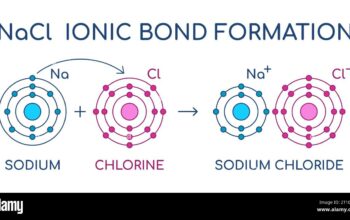The central dogma of molecular biology is often heralded as a cornerstone concept in genetics and molecular biology. Before delving into its intricate details, one might ponder: Is this principle an absolute truth in the realm of biological sciences, or does it possess nuances that challenge its foundational status? To explore this query, we must dissect the tenets of the central dogma, scrutinize its mechanistic underpinnings, and examine emergent discoveries that may complicate this perspective.
At its essence, the central dogma postulates a unidirectional flow of genetic information within biological systems. Specifically, this paradigm posits that DNA, the molecular repository of genetic information, serves as a template for the synthesis of RNA through a process known as transcription. Subsequently, this RNA transcription product serves as a blueprint for the synthesis of proteins via a process termed translation. This triad—DNA to RNA to protein—is emblematic of biological function and expression, sparking inquiry into whether it is indeed an immutable law.
To gain a comprehensive understanding, one must first appreciate the molecular mechanics underlying each phase of this dogma. The transcriptional phase involves various enzymes, notably RNA polymerase, which catalyzes the synthesis of a complementary RNA strand using a DNA template. The precision of this process is paramount; errors in transcription can lead to derivative effects on cellular function and organismal development.
Following transcription, the focus shifts to translation, wherein ribosomes facilitate the synthesis of proteins by decoding the messenger RNA (mRNA) sequence. Transfer RNA (tRNA) molecules play a pivotal role in this stage, bringing corresponding amino acids to the ribosomal complex, ensuring the polypeptide chain is formed in accordance with the genetic code. Here, the concept of redundancy within the genetic code allows for some leniency in the relationship between codons and the resultant amino acids, further enriching our understanding of genetic translation.
However, while the aforementioned framework provides a coherent narrative, it poses an intriguing challenge when applied universally. Within the diversity of life forms lies a plethora of mechanisms that defy the simplicity of the central dogma. One poignant example is the phenomenon of reverse transcription, notably exemplified by retroviruses, where RNA is reverse-transcribed into DNA. This begs the question: Does the central dogma accommodate such reverse flow, or does it necessitate an expansion of its parameters?
Additionally, the emergence of non-coding RNAs (ncRNAs) has further complicated the traditional dogmatic view. Long non-coding RNAs (lncRNAs) and microRNAs (miRNAs) have been increasingly recognized for their regulatory roles in gene expression, influencing cellular pathways without being translated into proteins. This challenges the classic dichotomy of transcription coupled solely to protein synthesis, suggesting a multi-faceted interplay between RNA species that contributes to a more intricate regulatory landscape.
Moreover, recent advancements in the field of epigenetics underscore the profound implications of external factors on gene expression. Epigenetic modifications, such as methylation and histone modification, can alter the accessibility of DNA for transcription, thereby influencing the overall flow of genetic information. This introduces an additional layer of regulation that the central dogma, in its original formulation, does not encompass.
As we traverse the complexities of the central dogma, it becomes evident that while the foundational principle remains a guiding framework for understanding molecular biology, it is not a doctrine without contention. The introduction of multi-layered regulatory mechanisms and reverse information flow suggests a paradigm shifting towards a more integrative model, wherein the classical linear trajectory of genetic expression is but a segment of a broader biological tapestry.
So, is the central dogma of molecular biology an unassailable truth? Or is it simply a starting point for a more nuanced understanding of genetic information flow? As we continue to unravel the complexities of molecular interactions and regulatory networks, it is crucial for the scientific community to remain adaptable in its interpretations. The doctrine may serve as a foundational guideline; however, the exploration of cellular processes must embrace the variability and dynamism inherent in biological systems.
In conclusion, the central dogma of molecular biology, while pivotal in establishing a framework for understanding genetic information flow, reveals itself to be a simplified model when confronted with the complexities of molecular biology. As research continues to unveil the diverse mechanisms that govern genes, proteins, and their interactions, it becomes increasingly clear that the dogma demands not just reverence, but also re-evaluation in light of new evidence. Biological systems are as intricate as they are beautiful, inviting continuous curiosity and inquiry into the truths that govern life’s molecular machinery.












